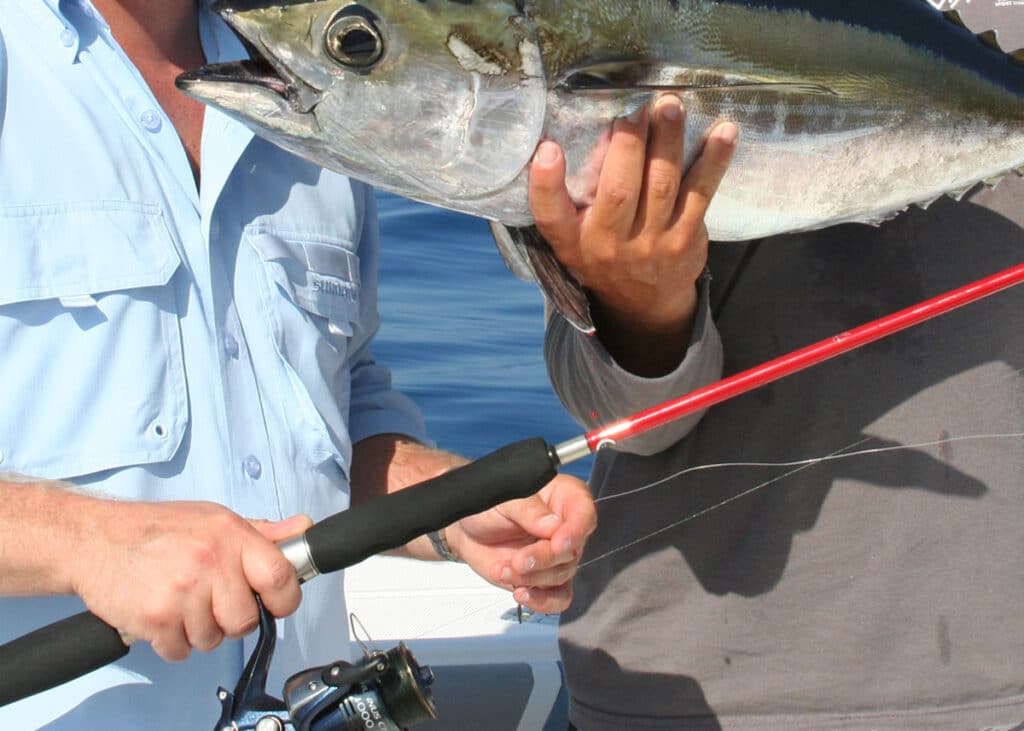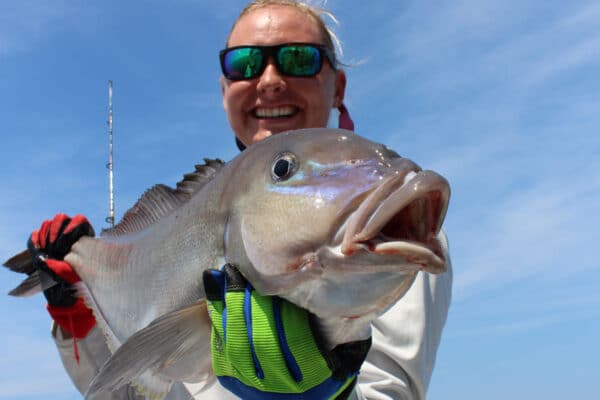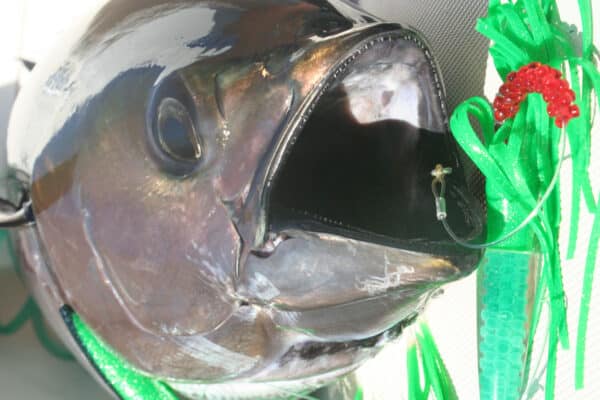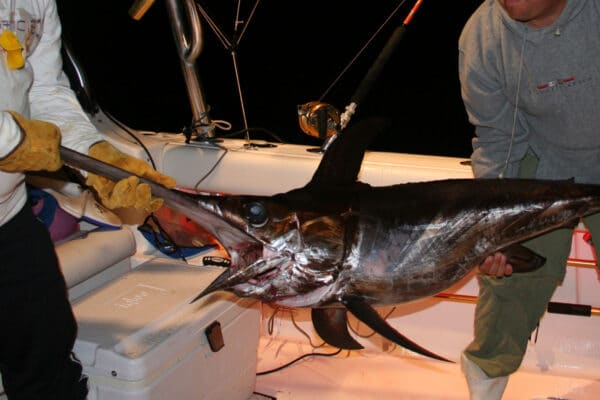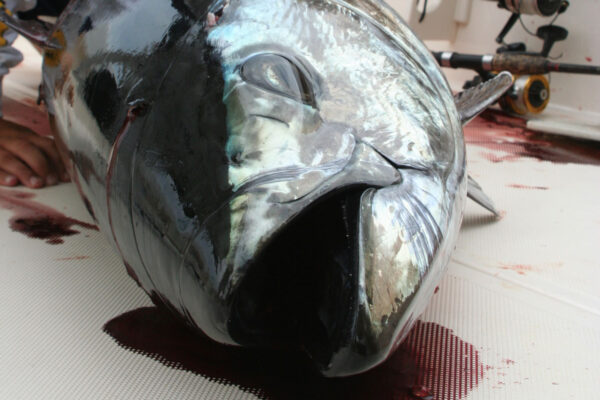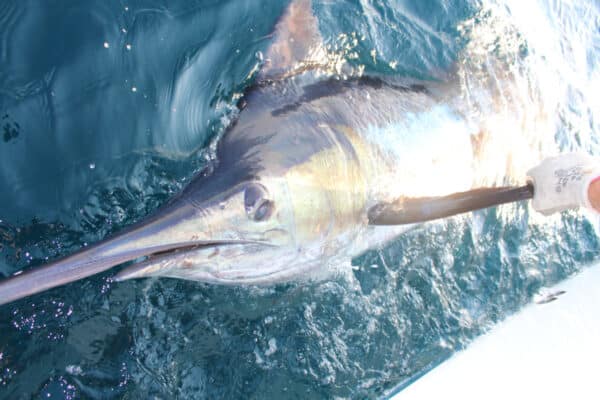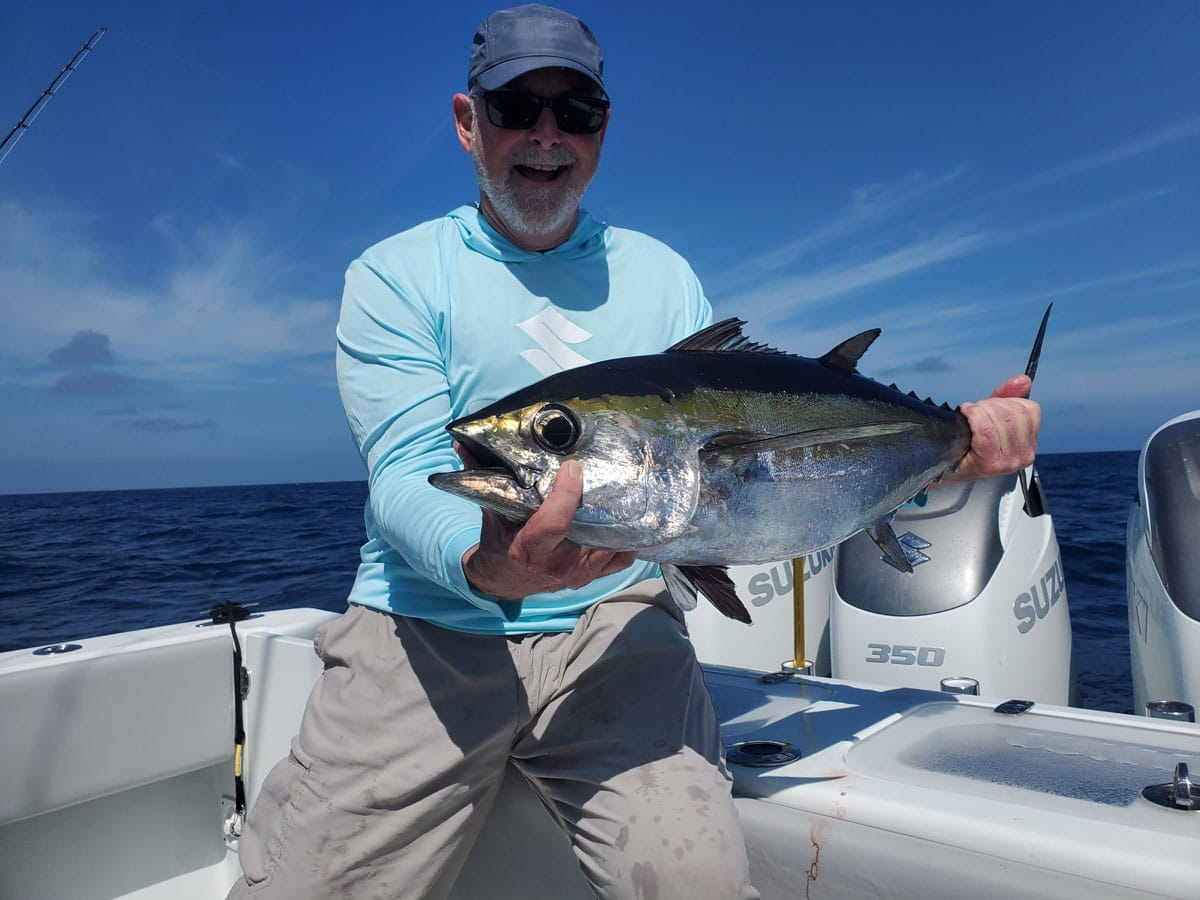
Trigger a feeding frenzy to load the boat with blackfin.
Pound for pound blackfin tuna fight like banshees and while they might not be the biggest tuna species around, they certainly count among the tastiest. Better yet, you can absolutely clobber these fish—if you have the right bait, and present it in the right way at the right time.
The Great Blackfin Bait Debate
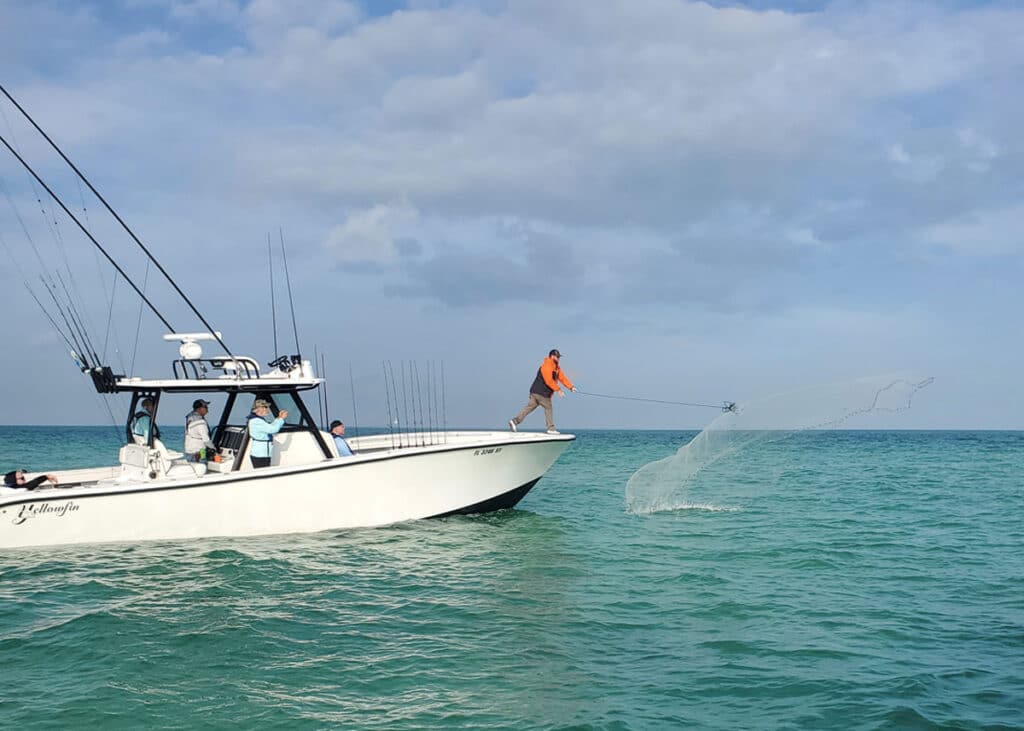
Well okay, there really isn’t much of a debate when it comes to choosing live baits for blackfin. They’ll pounce on pilchards with abandon, and these succulent sardines are often easy to come by. Blackfin are also perfectly happy to gobble up goggle-eyes and put a hurting on herring, and much of the time, will attack just about any relatively small baitfish. But widespread availability in big numbers usually means pilchards get the nod.
One thing nobody’s going to argue about: when it comes to bait, more is better. Much, much more. While dangling livies from a kite or slow-trolling them can certainly prove effective, nothing puts a pack of blackfin into a feeding frenzy like live bait chumming.
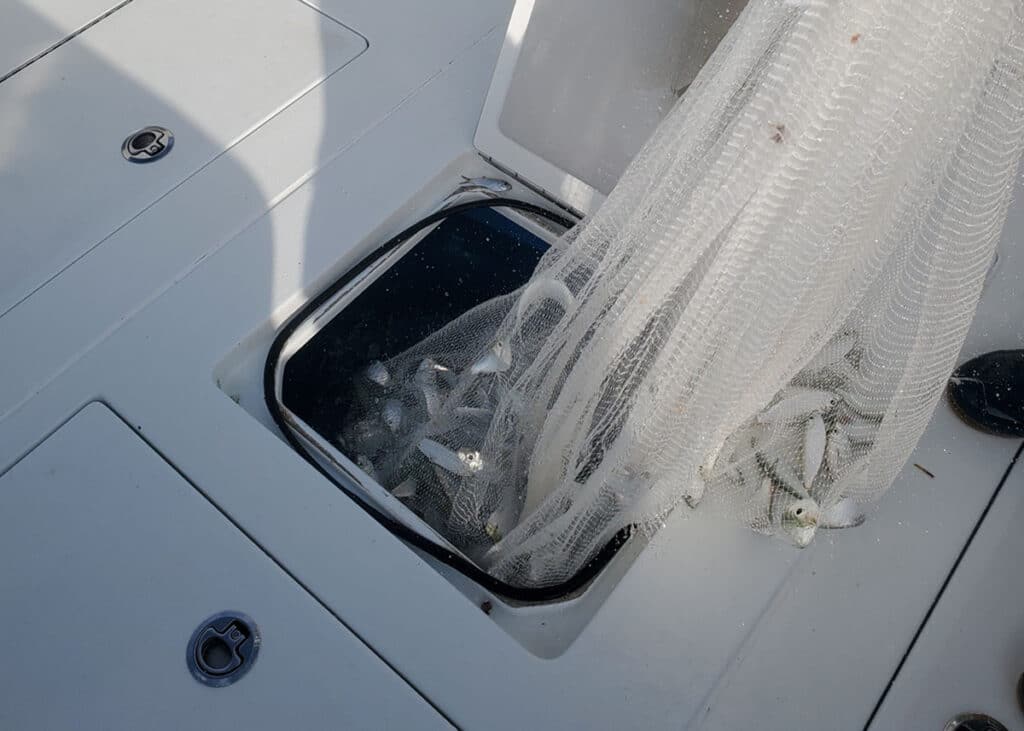
The concept is simple: toss so many baitfish over the side that you create a steady trail of baits being swept back by the current and pockets of mini-schools around your boat. To trigger the desired effect you need hundreds and hundreds of pilchards, which means you need a boat with tremendous livewell capacity and you also need to invest a significant amount of time in filling those livewells. For a boat with 150 or so gallons of livewell capacity—and a crewmember who’s competent with a cast net—that can mean spending an hour or two throwing, throwing, and throwing again.
On the Hook
Once the wells are chock-full the real fishing can begin and it’s time to head for the hump, drop-off, or edge of the reef where the blackfin are prowling. What you do next depends a bit on the wind and the current. In most cases it’s best to anchor up or drop the trolling motor and Spot-Lock, but in others you may want to drift. The stronger the wind and the tighter the fish are to structure, the more likely you’ll want to remain static. In an opposing wind/current situation, however, this can lead to snagged anchor rodes and tangled lines. You have to play the cards you’re dealt.
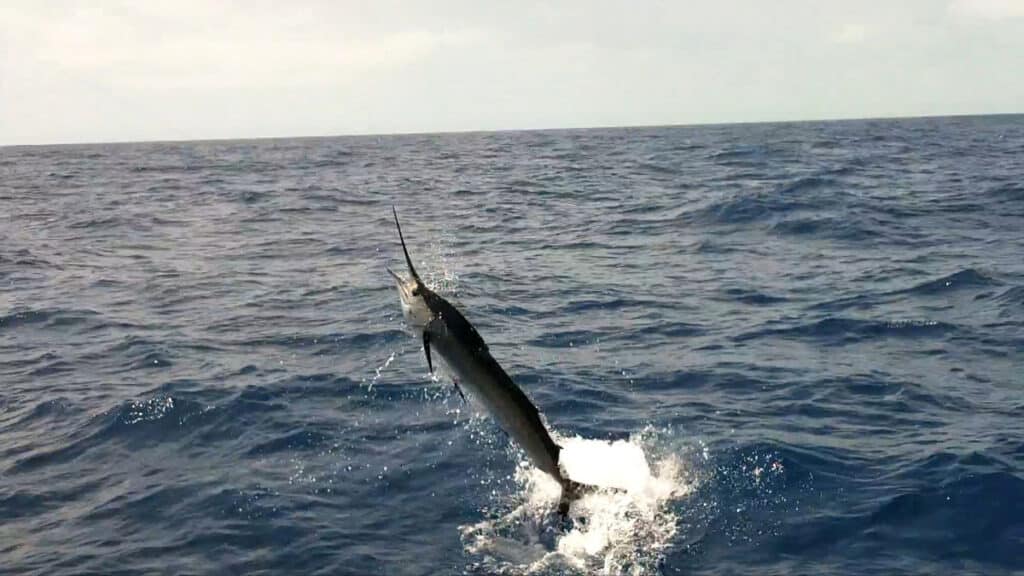
Okay: ready to trigger that feeding frenzy? Don’t just start shoveling livies over the side. Instead, scoop up a wriggling net full, grab a handful, and give ‘em a good squeeze before tossing them into the water. Grab another handful and throw them into the outboard cowl or against the transom, not hard enough to kill them but with enough force to stun them so they pinwheel and wiggle at the surface. Grab a third handful and throw them as hard as
you can off the port side, then send another off to starboard. Dump over whatever baitfish remain in the net and then repeat the process.
Note to self: wearing gloves is a good idea.
The idea here is to injure and scatter most of the baits. You don’t want them to form into a single solid school right under you, nor do you want them all to swim as far away as fast as they can. Ideally, you’ll have small, patchy schools form up while the bulk of the baits are either zinging around in terror or twitching and pinwheeling on the surface.
Keep this up for 10 minutes, and as the current carries them off you’ll soon have a live bait chum line stretching far behind the boat. Now it’s time to deploy some hook baits. But even after you start fishing you want to keep up a steady stream of free meals. At this point you can slow the flow but you don’t ever want to stop it entirely. Every couple of minutes go back to scooping and throwing.
Bending the Rods
In some cases you’ll know when the fish arrive and where they are because tuna-nuclear explosions start going off on those pinwheeling pilchards. Most of the time, however, you won’t get this treat right from the start. So hook the pilchards through the nose and set out a few lines, one freelined, one with a half-ounce of lead, and another with an ounce. These can be set in holders or held, and if they don’t draw strikes try varying the distance they’re set at.
Meanwhile, send back a few drift baits with the same mix of weight/no weight (though often less is more with these lines). Peel out line with the reel in freespool and let them drift back freely for five or six minutes. Then lock up the reel and let the current stretch it tight for a few more minutes. If nothing strikes, crank it back in and start over again.
If you chose a halfway decent spot, at some point the reels will start screaming and the water will begin to churn. You’ll be reaching for the gaff again and again, and the deck will be ankle-deep in blood. You’ll clobber ‘em. And if not, well, there’s always next time.

